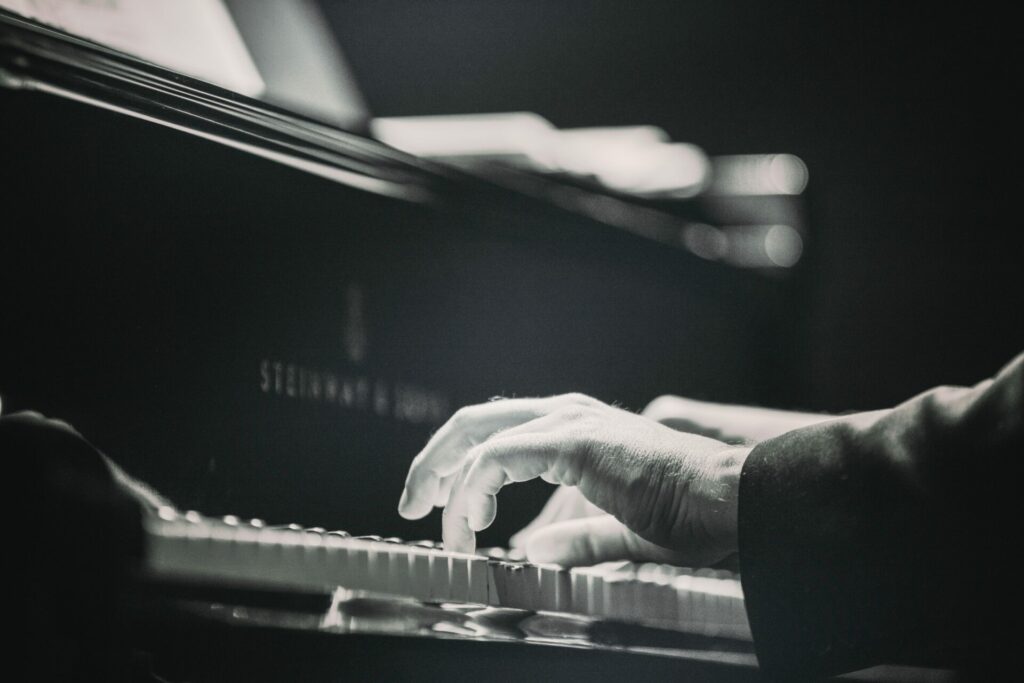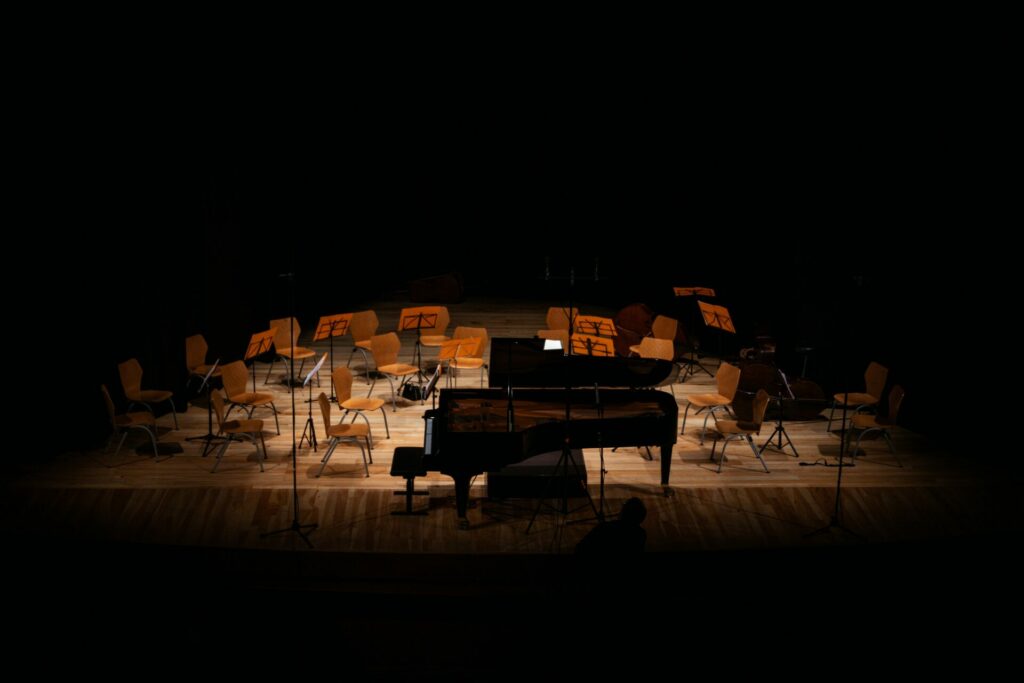
28 Aug What is Neoclassical Music
Ever found yourself tapping your foot to a symphony, only to realise it’s not quite Mozart, but it’s not quite Stravinsky either? Then you may have stumbled upon the fascinating world of Neoclassical Music. So, what is neoclassical music? This intriguing genre, a delightful cocktail of old and new, has been tickling the eardrums of music enthusiasts for centuries.
1. The Evolution and Influences of Neoclassical Music
Emerging in the early 20th century, Neoclassical music marked a significant shift in the musical landscape. This genre, steeped in tradition, sought to return to the aesthetic principles of the classical period, drawing inspiration from the works of composers such as Bach, Mozart, and Haydn. The evolution of Neoclassical music was largely a reaction against the perceived excesses of the Romantic era, with composers seeking to restore a sense of order and balance to their compositions.
Neoclassical music was heavily influenced by various cultural, social, and political factors. The devastation of World War I led many composers to seek solace in the past, resulting in a musical style that was both nostalgic and forward-looking. Additionally, the advent of recording technology allowed composers to explore and reinterpret classical forms in new and innovative ways. Tip sheets, which provided guidance on popular styles and trends, also played a crucial role in shaping the Neoclassical movement. These influences combined to create a musical genre that was both rooted in tradition and distinctly modern.
2. Key Composers and Their Contributions to Neoclassical Music
Neoclassical music owes much of its evolution and development to a number of influential composers. One such figure is Igor Stravinsky, a Russian composer who is often considered the pioneer of this genre. Stravinsky’s works, such as “Pulcinella” and “The Rite of Spring”, are characterised by their innovative use of rhythm and harmony, which drew heavily from earlier classical styles. His compositions, while modern in their approach, maintained a strong connection to traditional classical forms, thus embodying the essence of neoclassicism.
Another significant contributor to neoclassical music is Paul Hindemith. This German composer’s works are known for their contrapuntal complexity, tonal innovation, and incorporation of old musical forms into a contemporary context. His “Symphony: Mathis der Maler” is a prime example of his neoclassical style, with its use of traditional symphonic form and Baroque thematic development. Hindemith’s music, while complex, is deeply rooted in classical traditions, making him a key figure in the development of neoclassical music.
Sergei Prokofiev was another Russian composer whose contributions to neoclassical music are immeasurable. Prokofiev’s works, such as “Classical Symphony” and “Peter and the Wolf”, are renowned for their melodic inventiveness, rhythmic vitality, and classical forms. His music, while distinctly modern, is imbued with a strong sense of classical tradition, making him a pivotal figure in the neoclassical movement.
3. Distinguishing Features of Neoclassical Music
Balance and clarity of structure stand out as two of the most defining features. Unlike the emotional intensity and complex structures of Romantic music, Neoclassical music leans towards a more controlled and formal approach. This is often achieved through the use of traditional forms and styles from the Classical period, such as sonata form and theme and variations.
Another key aspect of Neoclassical music is its emphasis on tonality. While many composers of the 20th century were exploring atonality and dissonance, Neoclassical composers chose to return to the tonal harmony of the 18th century. This is not to say that they completely avoided dissonance, but rather that they used it in a controlled manner, often to highlight certain elements of the music.
Neoclassical music is often characterised by its use of smaller ensembles. While Romantic music frequently called for large orchestras, Neoclassical composers often preferred smaller groups of instruments. This allowed for greater clarity and precision, both in terms of the music’s structure and its emotional content. Check out our Neoclassical music.

4. The Impact of Neoclassical Music on Modern Compositions
The fusion of old and new has had a profound influence on the music we hear today. Composers of modern music often draw inspiration from the neoclassical period, utilising its emphasis on form, balance and emotional restraint to create their own unique soundscapes.
Consider the following comparison table, which illustrates the influence of neoclassical music on a selection of modern compositions:
| Modern Composition | Neoclassical Influence |
|---|---|
| John Adams’ ‘Shaker Loops’ | Use of repetition and variation, a common technique in neoclassical music |
| Philip Glass’ ‘Glassworks’ | Emphasis on form and structure, a key characteristic of neoclassical music |
| Steve Reich’s ‘Music for 18 Musicians’ | Integration of traditional harmonic structures, a hallmark of neoclassical music |
As the table demonstrates, the influence of neoclassical music is evident in a range of modern compositions, from the minimalist works of John Adams and Philip Glass, to the complex rhythmic structures of Steve Reich. This enduring influence attests to the lasting impact of the neoclassical period on the evolution of music. A piece that is influenced by neoclassicism is Faded Sorrow.
Frequently Asked Questions
What is the difference between classical and neoclassical music?
Classical music refers to a broad period of music from the mid-18th to early 19th century, characterised by its highly structured and balanced compositions. Neoclassical music, on the other hand, emerged in the early 20th century and is characterised by a return to the order, balance and clarity found in earlier classical music, but with a modern twist.
Why is it called ‘Neoclassical’ music?
The term ‘Neoclassical’ is derived from the Greek word ‘neo’ meaning new, and ‘classical’, referring to the classical period in Western music. It signifies a new or revived interest in the musical principles of the classical period, such as balance, order, and emotional restraint.
How has neoclassical music influenced other genres?
Neoclassical music has had a significant influence on various genres, particularly film scores and video game music. Its emphasis on melody, harmony, and structure has provided a foundation for these genres to create dramatic and emotional soundscapes. It has also influenced the development of modern classical music and certain sub-genres of heavy metal known as ‘neoclassical metal’.
Can you recommend some neoclassical music pieces for beginners?
For beginners, some accessible neoclassical pieces include Igor Stravinsky’s “Pulcinella Suite”, Sergei Prokofiev’s “Classical Symphony”, and Paul Hindemith’s “Symphonic Metamorphosis”. These pieces offer a good introduction to the characteristics and styles of neoclassical music.
Is neoclassical music still being composed today?
Yes, neoclassical music is still being composed today. Many contemporary composers incorporate neoclassical elements into their work, creating a fusion of old and new. This can be seen in the works of composers like John Adams, Philip Glass, and Arvo Pärt.

